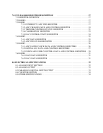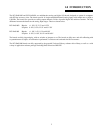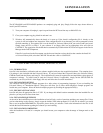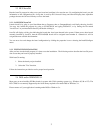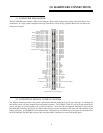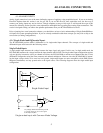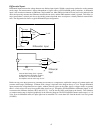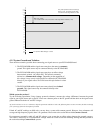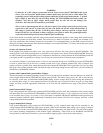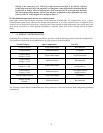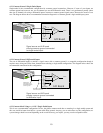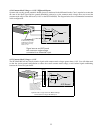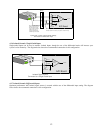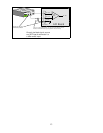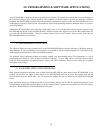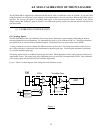
WARNING
If either the AC or DC voltage is greater than 10 volts, do not connect the PCI-DAS1000 to this signal
source. You are beyond the boards usable common mode range and will need to either adjust your
grounding system or add special Isolation signal conditioning to take useful measurements. A ground
offset voltage of more than 30 volts will likely damage the PCI-DAS1000 board and possibly your
computer. Note that an offset voltage much greater than 30 volts will not only damage your
electronics, but it may also be hazardous to your health.
This is such an important point, that we will state it again. If the voltage between the ground of your
signal source and your PC is greater than 10 volts, your board will not take useful measurements. If
this voltage is greater than 30 volts, it will likely cause damage, and may represent a serious shock
hazard! In this case you will need to either reconfigure your system to reduce the ground differentials,
or purchase and install special electrical isolation signal conditioning.
If you cannot obtain a reasonably stable DC voltage measurement between the grounds, or the voltage drifts around consid-
erably, the two grounds are most likely isolated. The easiest way to check for isolation is to change your voltmeter to it’s
ohm scale and measure the resistance between the two grounds. It is recommended that you turn both systems off prior to
taking this resistance measurement. If the measured resistance is more than 100 Kohm, it’s a fairly safe bet that your system
has electrically isolated grounds.
Systems with Common Grounds
In the simplest (but perhaps least likely) case, your signal source will have the same ground as the PCI-DAS1000. This
would typically occur when providing power or excitation to your signal source directly from the PCI-DAS1000. There may
be other common ground configurations, but it is important to note that any voltage between the PCI-DAS1000 ground and
your signal ground is a potential error voltage if you set up your system based on a common ground assumption.
As a safe rule of thumb, if your signal source or sensor is not connected directly to an LLGND pin on your PCI-DAS1000,
it’s best to assume that you do not have a common ground even if your voltmeter measured 0.0 Volts. Configure your
system as if there is ground offset voltage between the source and the PCI-DAS1000. This is especially true if you are using
high gains, since ground potentials in the sub millivolt range will be large enough to cause A/D errors, yet will not likely be
measured by your handheld voltmeter.
Systems with Common Mode (ground offset) Voltages
The most frequently encountered grounding scenario involves grounds that are somehow connected, but have AC and/or DC
offset voltages between the PCI-DAS1000 and signal source grounds. This offset voltage my be AC, DC or both and may
be caused by a wide array of phenomena including EMI pickup, resistive voltage drops in ground wiring and connections,
etc. Ground offset voltage is a more appropriate term to describe this type of system, but since our goal is to keep things
simple, and help you make appropriate connections, we’ll stick with our somewhat loose usage of the phrase Common
Mode.
Small Common Mode Voltages
If the voltage between the signal source ground and PCI-DAS1000 ground is small, the combination of the ground voltage
and input signal will not exceed the PCI-DAS1000’s +/-10V common mode range, (i.e. the voltage between grounds, added
to the maximum input voltage, stays within +/-10V), This input is compatible with the PCI-DAS1000 and the system may be
connected without additional signal conditioning. Fortunately, most systems will fall in this category and have a small
voltage differential between grounds.
Large Common Mode Voltages
If the ground differential is large enough, the PCI-DAS1000’s +/- 10V common mode range will be exceeded (i.e. the
voltage between PCI-DAS1000 and signal source grounds, added to the maximum input voltage you’re trying to measure
exceeds +/-10V). In this case the PCI-DAS1000 cannot be directly connected to the signal source. You will need to change
your system grounding configuration or add isolation signal conditioning. (Please look at our ISO-RACK and ISO-5B-
series products to add electrical isolation, or give our technical support group a call to discuss other options.)
NOTE
8



